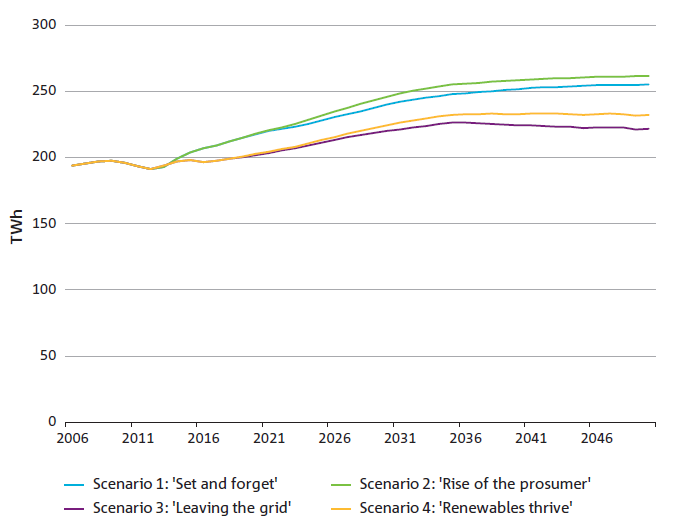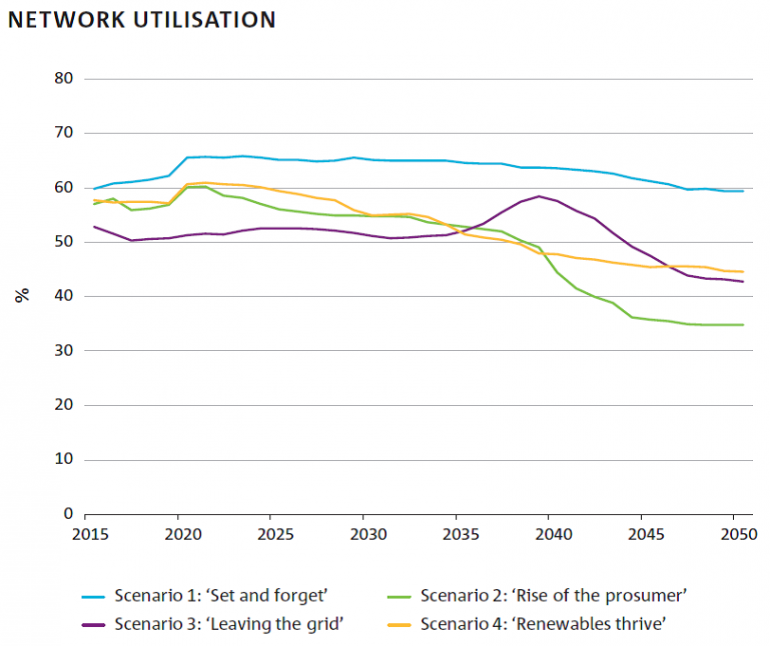Will we embrace or reject the network
With the doubling in electricity prices due to a spike in network costs in conjunction with the proliferation of solar PV (which has grown to 3 gigawatts from virtually nothing just four years ago) everyone is now beginning to wonder whether we might be on the precipice of a dramatic shift in the shape of the electricity sector.
Now CSIRO has released a report examining what might happen which provides some thought provoking charts of the week.
CSIRO Energy Flagship Chief Economist, Paul Graham, said recent declining demand, higher electricity prices and strong adoption of roof-top solar panels have changed the industry’s view of what is plausible in the future and trained a focus on affordability challenges.
It was also being debated at the Energy Efficiency Council’s annual conference.
CSIRO paint four alternative scenarios for what might happen:
Set and forget – consumers simply can’t be bothered with getting too involved in how their electricity is supplied and managed. However to keep peak demand under control smart meters are rolled out alongside electricity tariff reform with electricity companies largely in the driving seat of implementing demand management services such as air conditioner load control.
Rise of the prosumer – plunging costs of solar PV and inverters mean every household with appropriate roof space has a solar system. Households also become more interested in how to manage their own electricity needs and second hand batteries from electric vehicles become widely used as on-site household electric storage.
Leaving the Grid – Electricity tariffs are not reformed and remain based on smeared average per kWh independent of time of day and peak demand periods. At the same time low feed-in tariffs encourage households to want to maximise self-consumption from their solar systems and proliferation of electric vehicles help them to do this. A death spiral occurs where declining consumption of electricity from the grid leads to increased electricity prices to recover fixed network costs, which encourages further declines in consumption of power from the grid.
Renewables thrive – costs of renewable power generation decline much faster than thought and emission reduction policy efforts focus on increasing the use of renewables rather than the use of carbon pricing. The network plays a central role in helping to manage very high penetration of renewables and the accompanying weather related variability.
The chart below illustrates what CSIRO project under the four scenarios for total electricity consumption incorporating electricity generated by consumers on their own premises.

But what is interesting is that electricity carried over the grid stalls for the next few decades and then precipitously declines around 2040 as illustrated below.

The end result is that utilisation of the network (below) takes a massive hit in all scenarios bar set and forget. Such outcomes must be incredibly concerning given how much network expenditure regulators approved in the last few years.

















